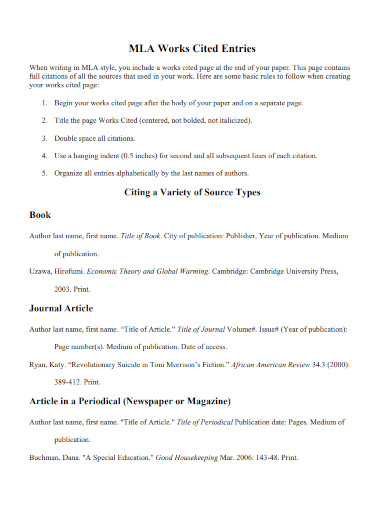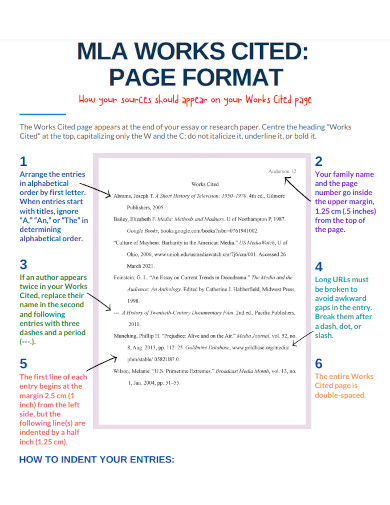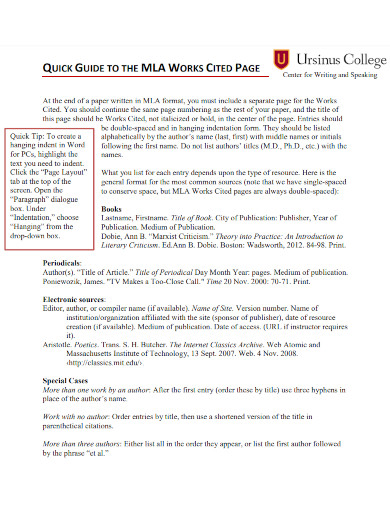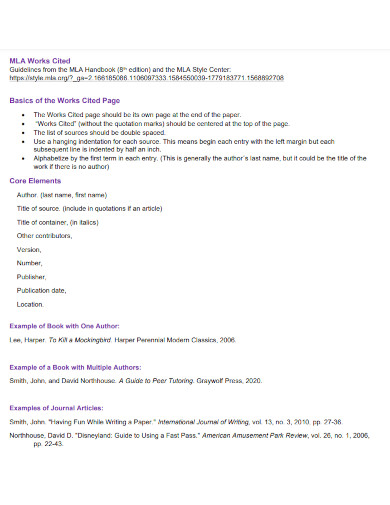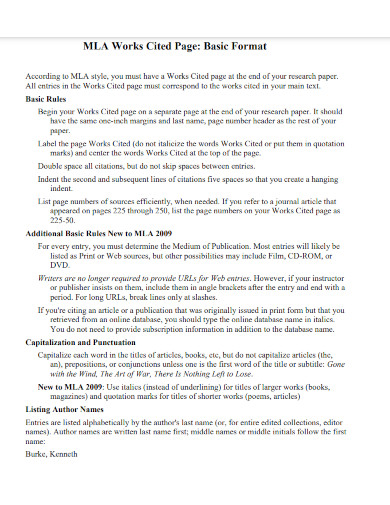24+ MLA Works Cited Page Examples to Download
When it comes to academic writing, it is crucial to provide proper citations and references to acknowledge the sources used. The Modern Language Association (MLA) Style Format is widely used in humanities disciplines for creating works cited pages. A well-crafted works cited page with accurate MLA citations not only enhances the credibility of your research but also allows readers to explore the sources that influenced your work. In this article, we will explore the concept of an MLA citations works cited page, provide a step-by-step guide on how to create one, address some common FAQs, and conclude with valuable insights.
1. MLA Work Cited Entries
2. Rules for MLA Works Cited Page
3. MLA Works Cited Page Format
4. Quick Guide to MLA Works Cited Page
5. MLA Works Cited Page
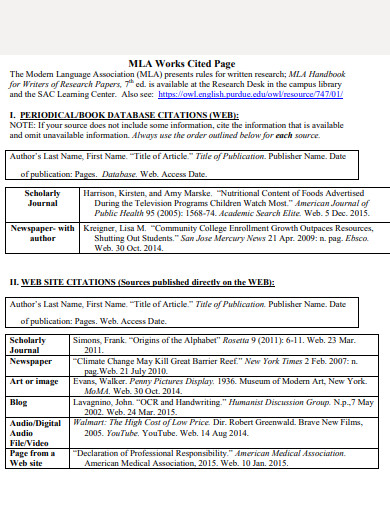
sac.edu
6. Sample MLA Works Cited Page
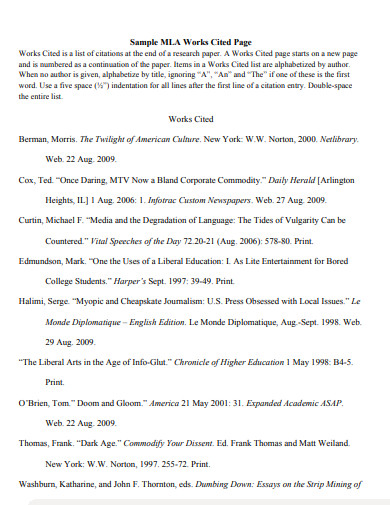
collegeofsanmateo.edu
7. MLA Works Cited Basics
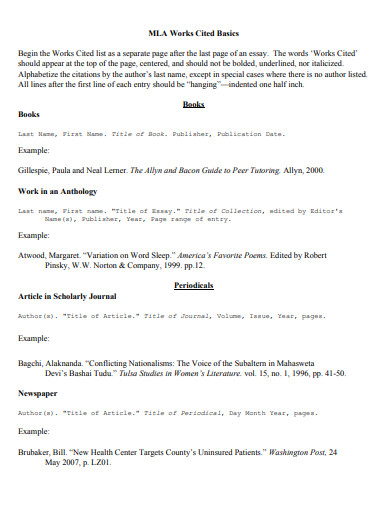
alamo.edu
8. Citations for MLAs Works Cited Page
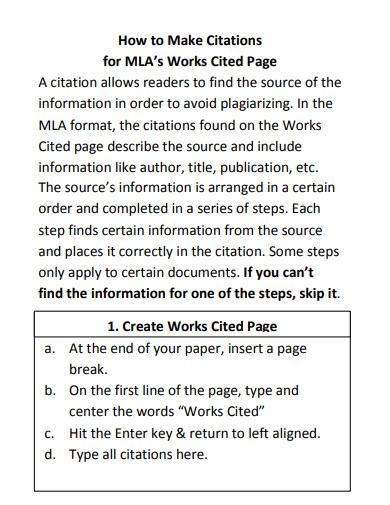
weber.edu
9. Student Resource MLA Works Cited Guide
10. MLA Works Cited Page Basic Format
11. MLA Works Cited Page Checklist

uvu.edu
12. MLA Works Cited Page Guidelines
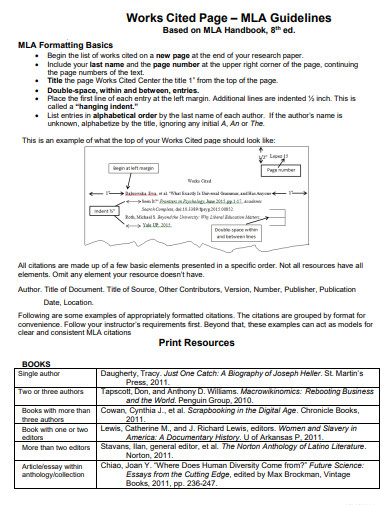
gavilan.edu
13. FAQs for MLA Works Cited Page

lamar.edu
14. MLA The Works Cited Page

uregina.ca
15. MLA Works Cited Page Packet

hcs.stier.org
16. MLA Works Cited Page Template
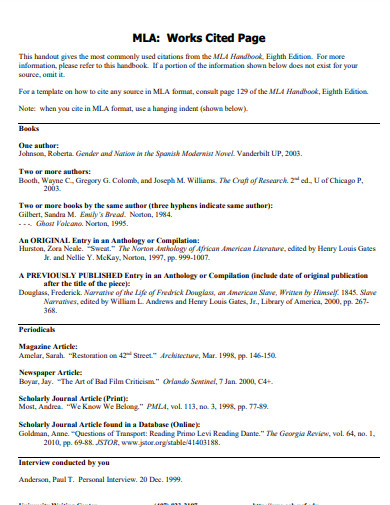
uwc.cah.ucf.edu
17. MLA Works Cited Page Listing
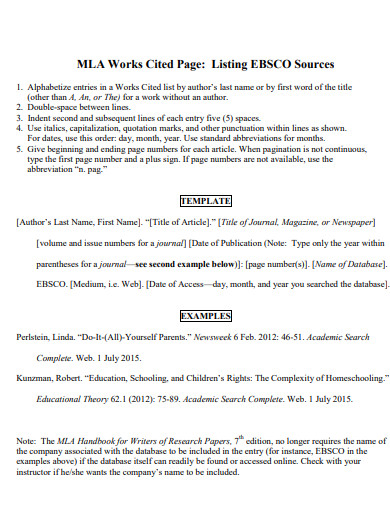
avc.edu
18. Creating an MLA Works Cited Page
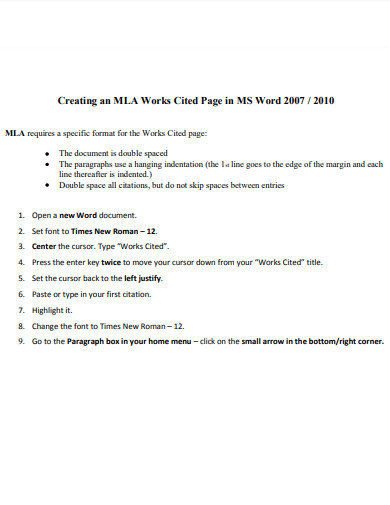
mobile.collierschools.com
19. Simple MLA Works Cited Page

middlesex.mass.edu
20. Writing Center MLA Works Cited Page
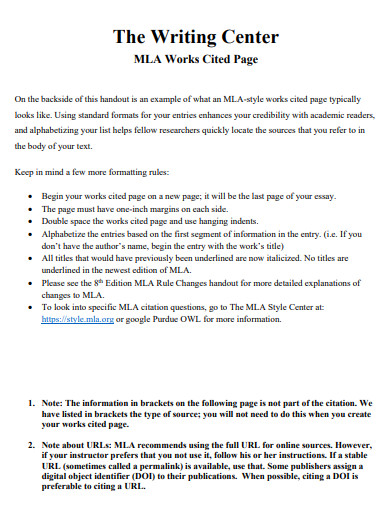
mtsac.edu
21. MLA Style Works Cited Page
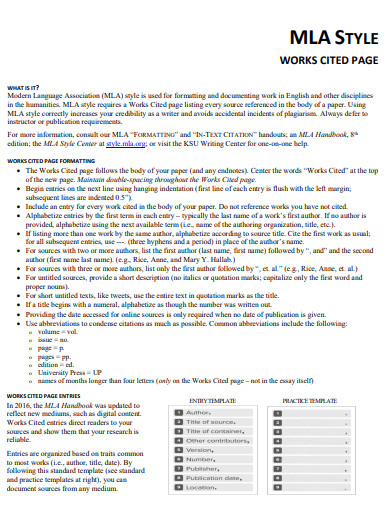
writingcenter.kennesaw.edu
22. MLA Works Cited Page Layout
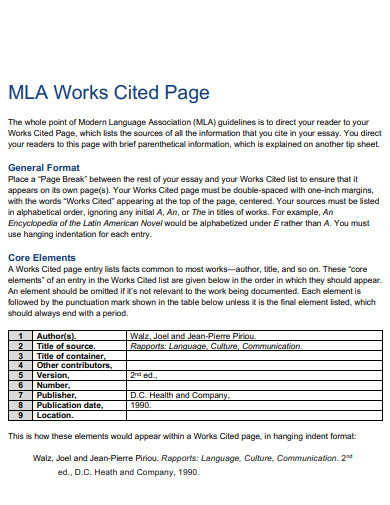
yc.yccd.edu
23. Printable MLA Works Cited Page
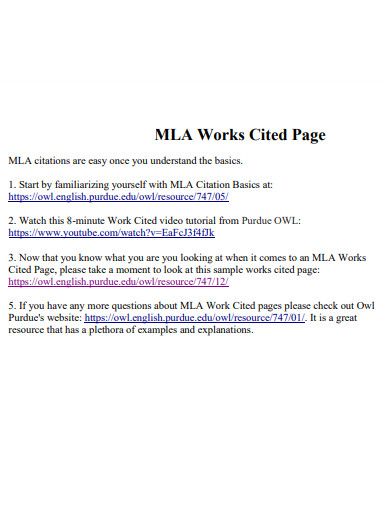
cascadia.edu
24. MLA Documentation Works Cited Page
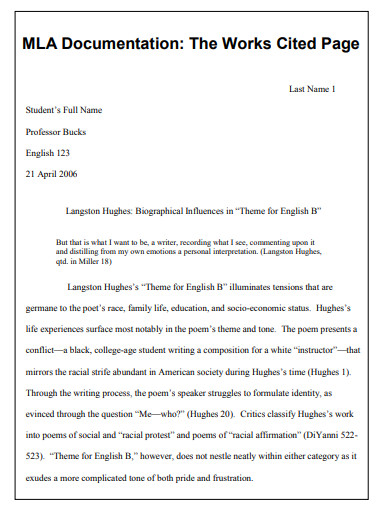
bucks.edu
25. Core Elements MLA Works Cited Page
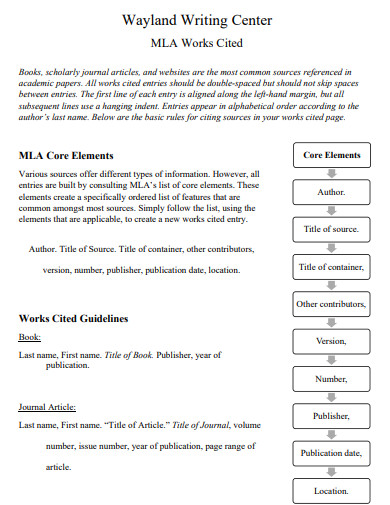
wbu.edu
What is MLA Works Cited Page?
The MLA Works Cited Page is an essential component of academic writing, particularly within the humanities. It serves as a comprehensive list of all the sources you have cited or referenced in your research paper, essay, or any other scholarly work. Unlike an annotated bibliography, which includes brief summaries and evaluations of each source, the works cited page focuses solely on accurate citation details. It enables readers to locate and verify the sources you have used, thus ensuring academic integrity.
How to Write a Works Cited Page in MLA
Before delving into the steps of crafting a works cited page, it is important to understand the objective behind it. The works cited page aims to provide readers with an organized list of sources used in your research, offering them the opportunity to explore these references independently. By following the outline format of the MLA Style, you can ensure consistency and clarity in your citations, making it easier for others to engage with your work.
Step 1: Gather the Necessary Information
Before you start creating your works cited page, gather all the necessary information about the sources you have used. This includes the author’s name, the title of the source (book, article, website, etc.), publication information (publisher, date, and location), and the medium of publication (print, web, etc.). Ensure that you have accurate and complete details for each source.
Step 2: Arrange Sources Alphabetically
Organize your sources alphabetically based on the author’s last name or the title if there is no author. Pay attention to proper alphabetical order, including any initials, hyphens, or spaces. If the primary and secondary source has multiple authors, list them in the same order as they appear on the source itself.
Step 3: Format Each Entry
Format each entry according to the specific requirements of MLA Style Format. Begin each entry with the author’s last name, followed by a comma and their first name. If there are multiple authors, separate their names with commas. For titles, use title case capitalization, where major words are capitalized. Italicize or underline the titles of books, journals, and websites. Use quotation marks for titles of articles, essays, and short stories. Include the publication information, followed by the medium of publication.
Step 4: Create a Hanging Indent
After formatting the entries, create a hanging indent for each source. In a hanging indent, the first line of each entry is flush with the left margin, while the subsequent lines are indented. This format improves readability and distinguishes individual entries.
Step 5: Double-Check for Accuracy
Once you have completed your works cited page, double-check each entry for accuracy and consistency. Verify that all the information is correctly cited and that the formatting adheres to the MLA guidelines. Make sure that all the necessary punctuation marks, italics, and underlining are applied correctly.
Step 6: Place Works Cited Page at the End
Insert your completed works cited page as the final page of your research paper or essay. Label it with the title “Works Cited,” centered at the top of the page. Ensure that the page is separate from the main body of your work and that it does not include any additional content such as footnotes or appendices.
FAQs
What is the difference between an annotated bibliography and an MLA works cited page?
An annotated bibliography includes brief annotations or evaluations of each source, providing additional insights into the relevance and quality of the sources. On the other hand, an MLA works cited page focuses solely on accurate citation details, without the annotations. Both serve different purposes and are used in different contexts.
Are there any specific guidelines for citing books in an MLA works cited page?
When citing books in MLA format, you need to include the author’s name, the title of the book in italics or underlined, the publication information, and the medium of publication. The specific format varies depending on whether it’s a print book or an electronic book (e-book). Consult the MLA Handbook or style guide for detailed guidelines.
Should the works cited page be numbered?
No, the works cited page should not be numbered. It should be the last page of your paper, placed after the main body of your work but before any appendices or supplemental material. The works cited page should have its own separate title (“Works Cited”), centered at the top of the page.
Mastering the skill of creating an MLA Works Cited Page is essential for any researcher or student in the humanities. By diligently following the prescribed MLA Style Format, you can ensure that your citations are accurate and well-structured. The works cited page serves as a testament to your thorough literature review and enables readers to explore the sources that shaped your work. Remember, well-crafted works cited page not only strengthens your academic integrity but also provides a solid foundation for future research endeavors.



